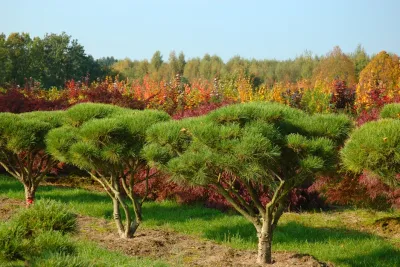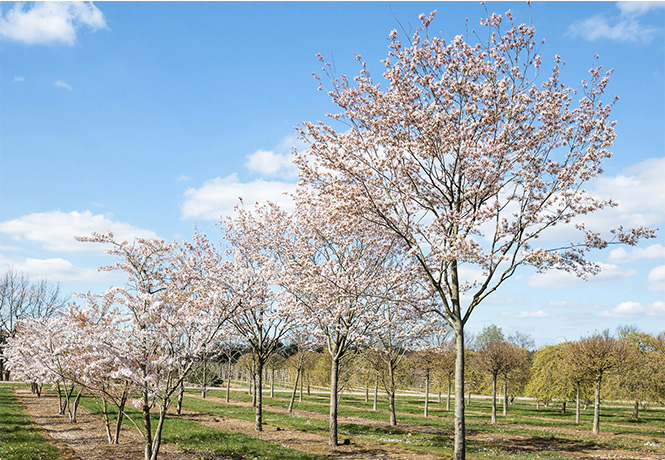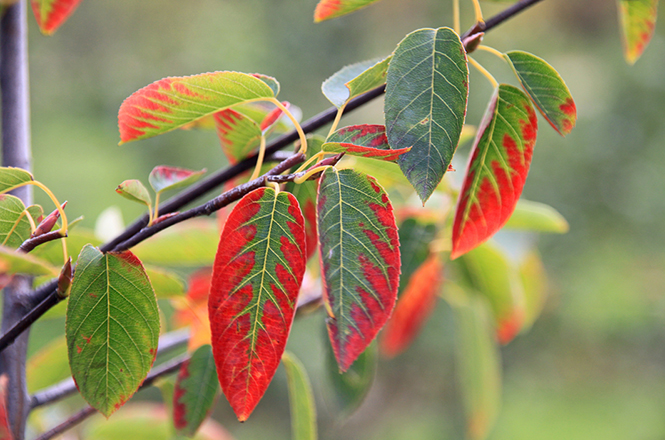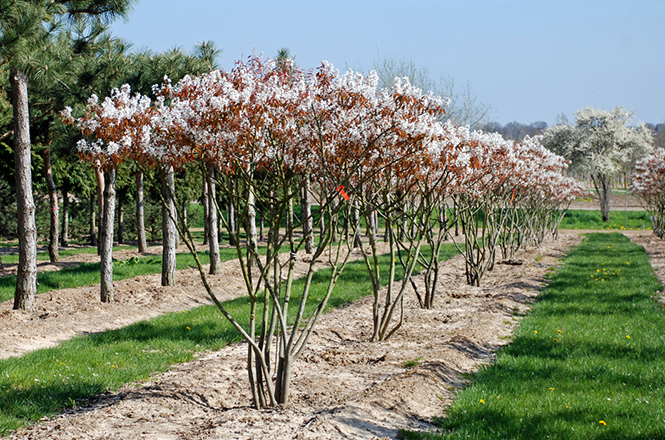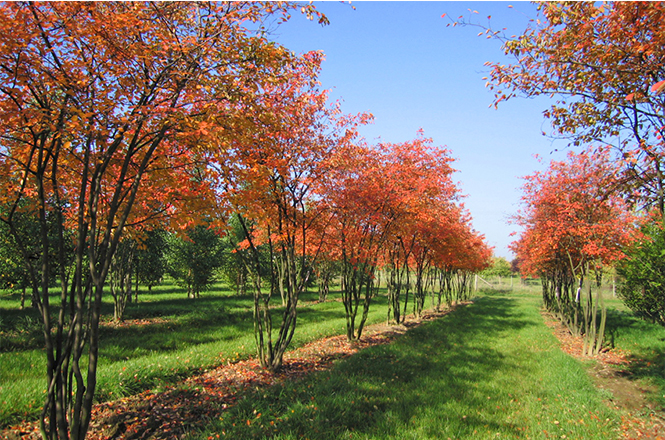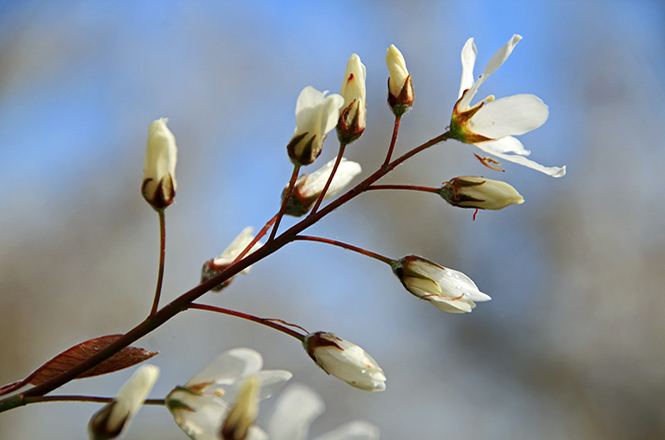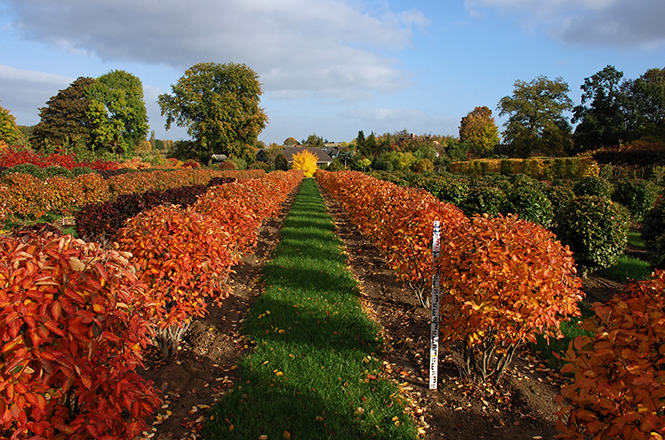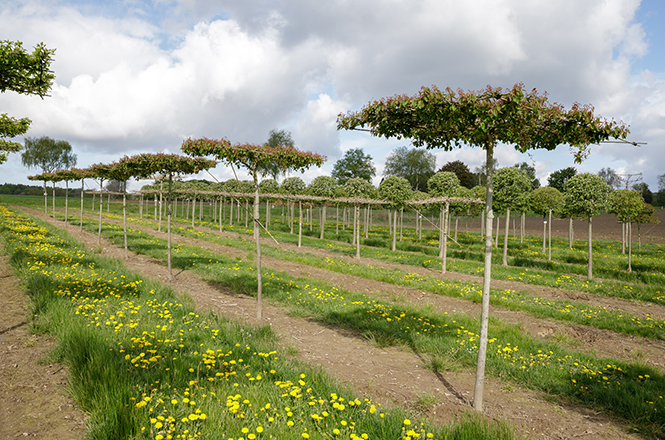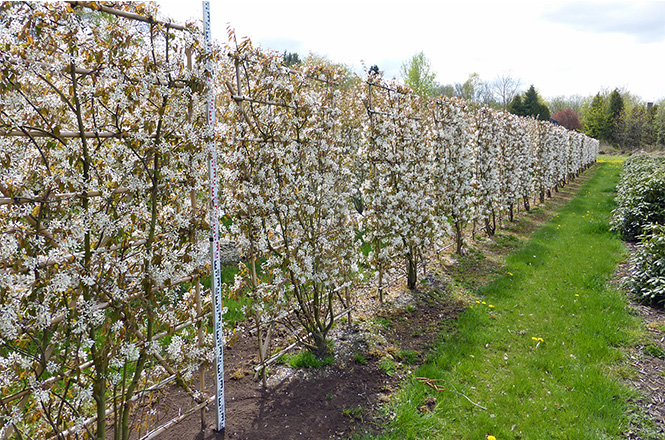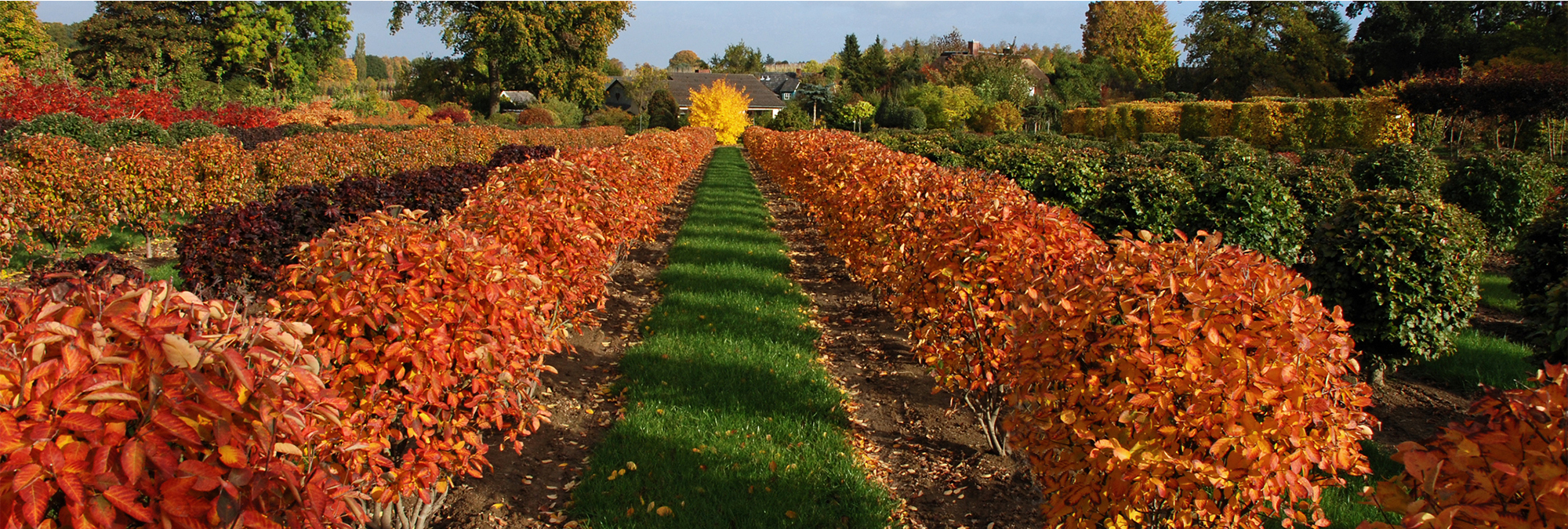
Noch immer unterschätzt und dabei ein Alleskönner!
Ein Hohelied auf die Felsenbirne
Amelanchier als Obstbaum? Als Bienenweide? Als Klimabaum? Als Dekoration?
Was denn nun?
Wir würden sagen, dass alles möglich ist. Die Felsenbirne ist ein Alleskönner, ein Universalgenie für Gärten, Parks und Straßen.
Süß und lecker sind die kleinen Früchte der Felsenbirne. Sie ähneln in Geschmack und Aussehen der Heidelbeere. Reich an Vitaminen, Mineralstoffen und Gerbsäure sind sie kleine Kraftquellen der Natur. Die meisten der 25 Arten der Gattung Amelanchier gelangten durch die frühe Seefahrt aus ihrer Heimat Nordamerika in unsere Breiten.
Ursprünglich wurden Amelanchier noch als Obstgehölz angebaut, doch das Wissen darum ging im Laufe der Zeit mehr und mehr verloren.
Im Sommer als Naschfrucht, im Herbst mit einer feurigroten Blattfärbung und im Frühjahr mit einer überwältigenden, cremig-weißen Blüte, ist die Felsenbirne fast ganzjährig ein attraktives Gehölz. Zudem ist Amelanchier als Bienenweide, Vogelnährgehölz und Klimabaum nahezu unersetzlich!

“Surprisingly, Ginkgo biloba can be well drawn as a trellis on south walls of a house; in spring you should cut it before its leaves are sprouted.”
Thomas Dieckmann, climate tree expert, Lorenz von Ehren Tree Nursery
Gems for every garden!
Ginkgo biloba is robust and undemanding, hardy, and it can withstand temperatures up to -28°C. However: For young trees, please protect the root area from frost.
Vegetation pattern
In the hilly area of the Yangtze Valley, the ginkgo tree can be seen in mixed populations of low Acer and Amelanchier species, Cornus controversa and C. kousa, evergreen Ilex, and Ligustrum types, as well as with magnolia species, Paulownia tomentosa, Prunus serrulata, Pyrus calleryana, and numerous oak species.
Juniperus and Pinus species, such as the Chinese black pine, grow in its vicinity.

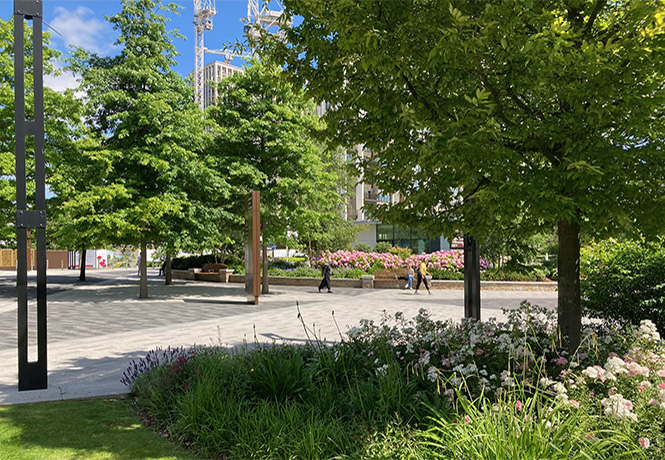
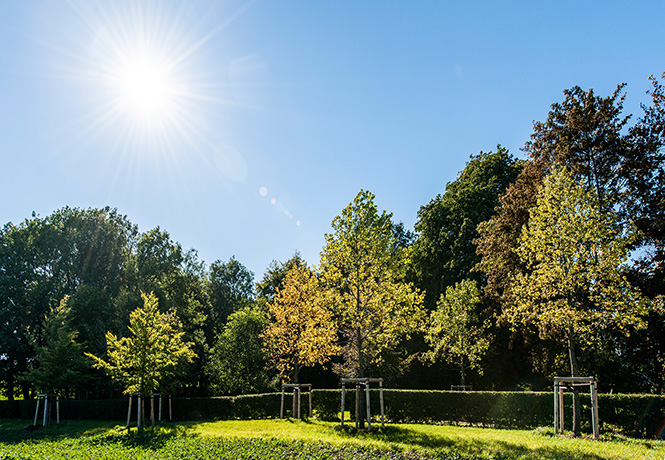
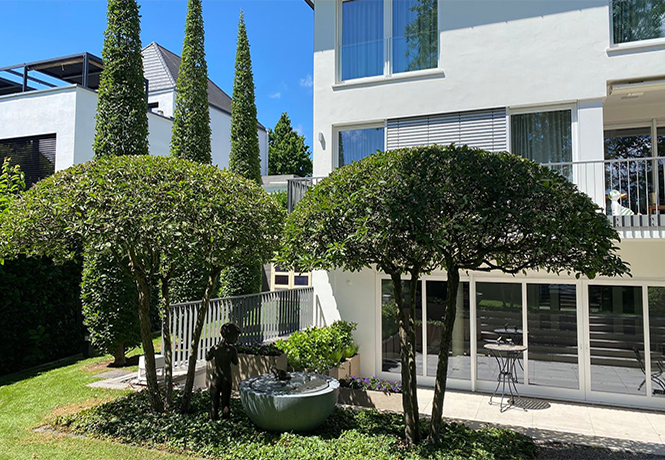
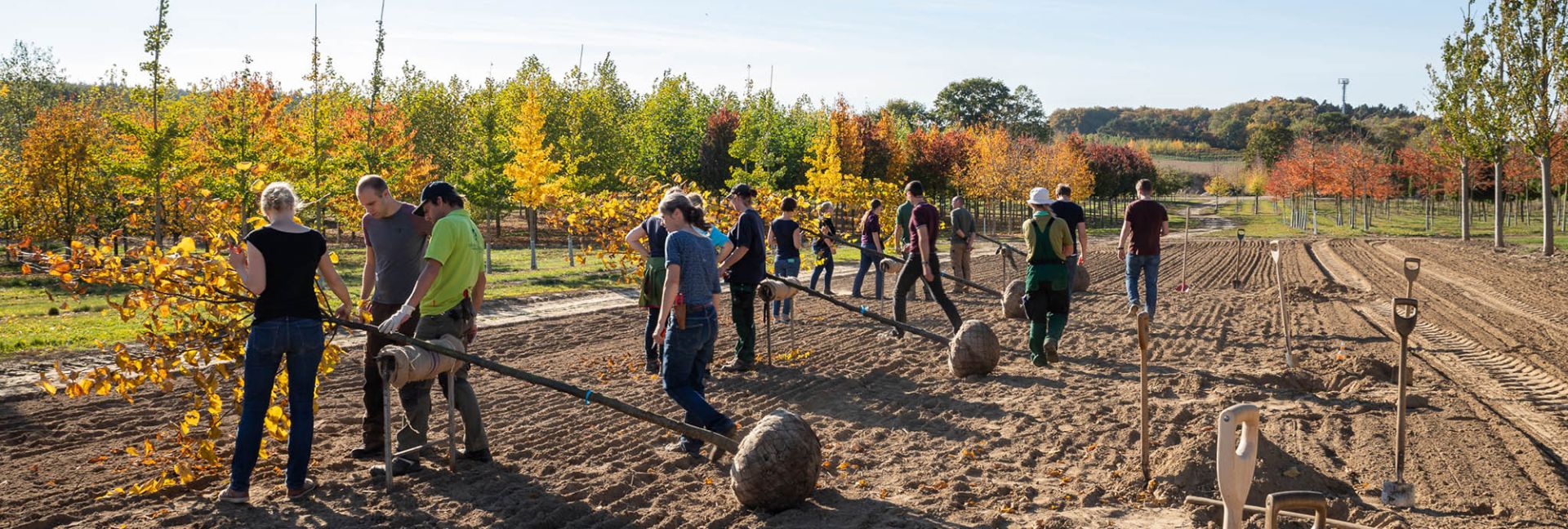

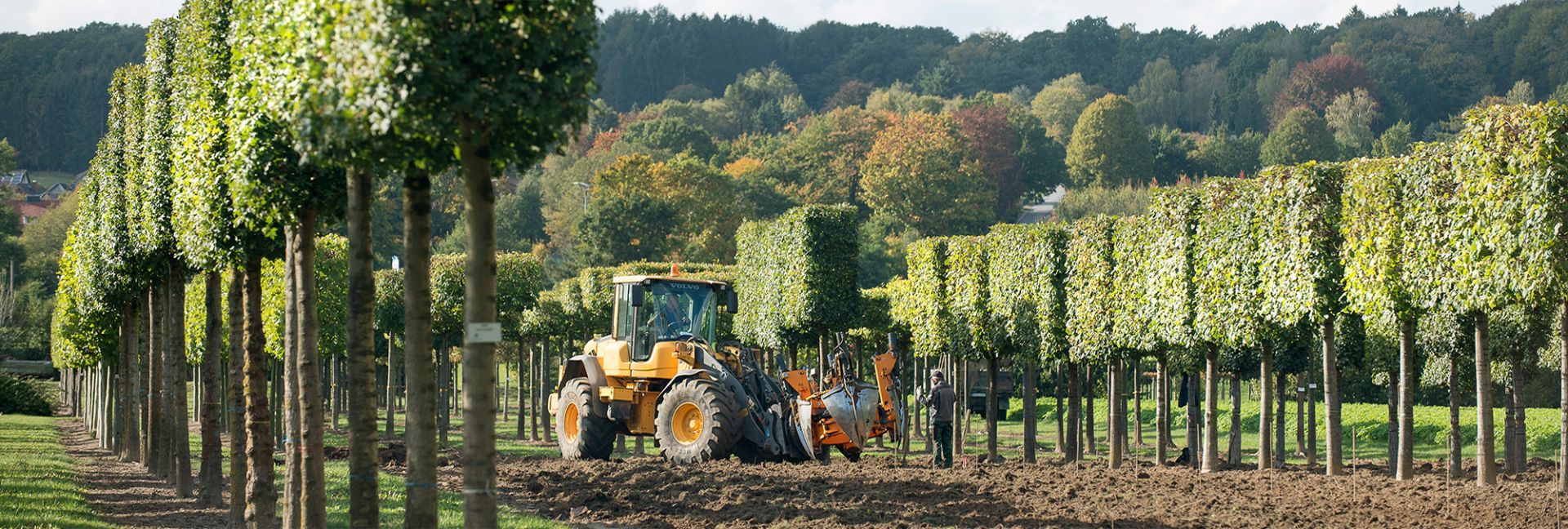
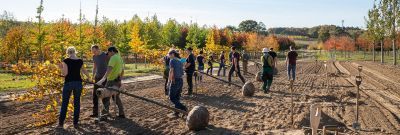
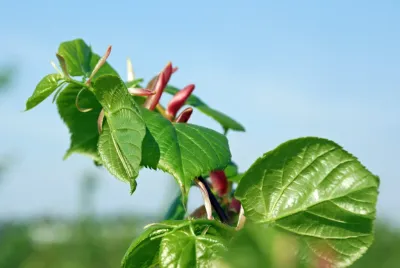
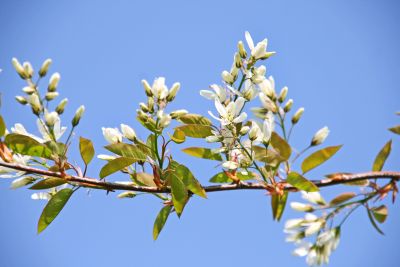
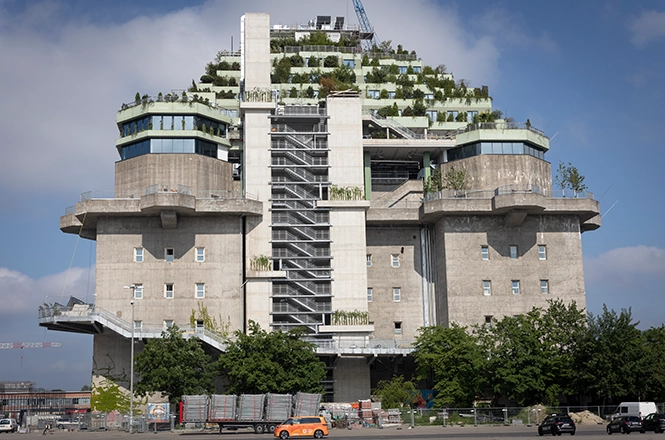
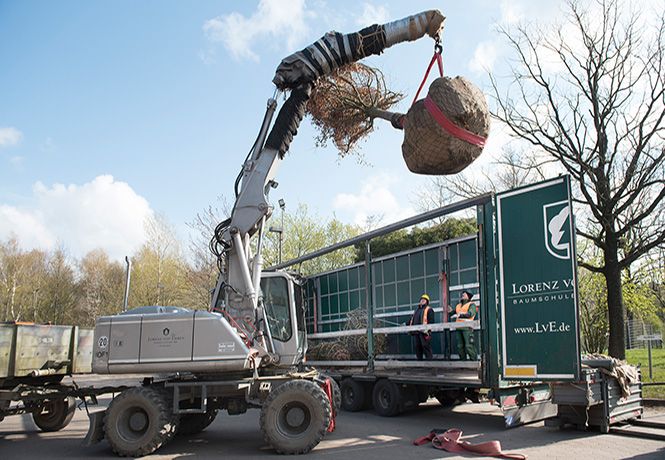
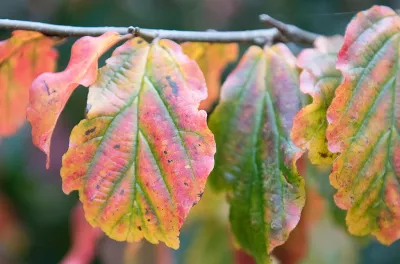
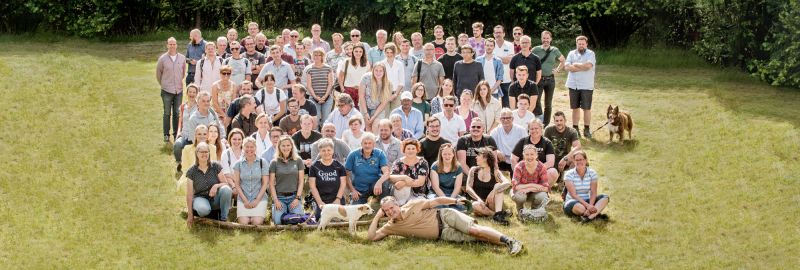

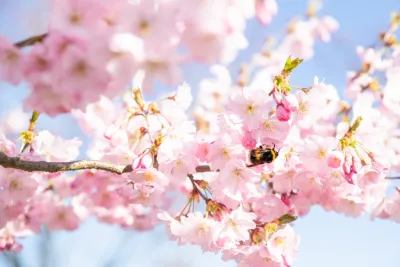
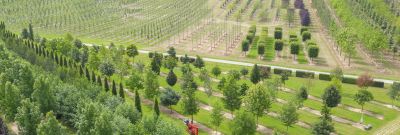
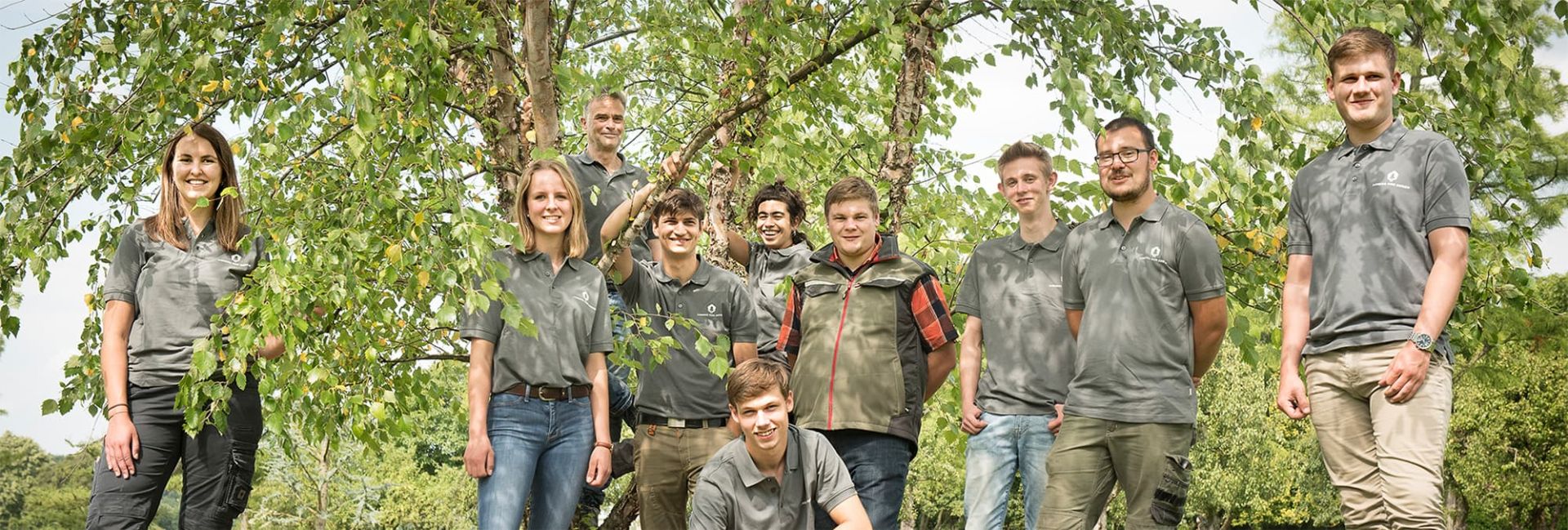
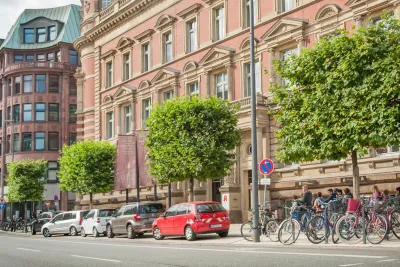
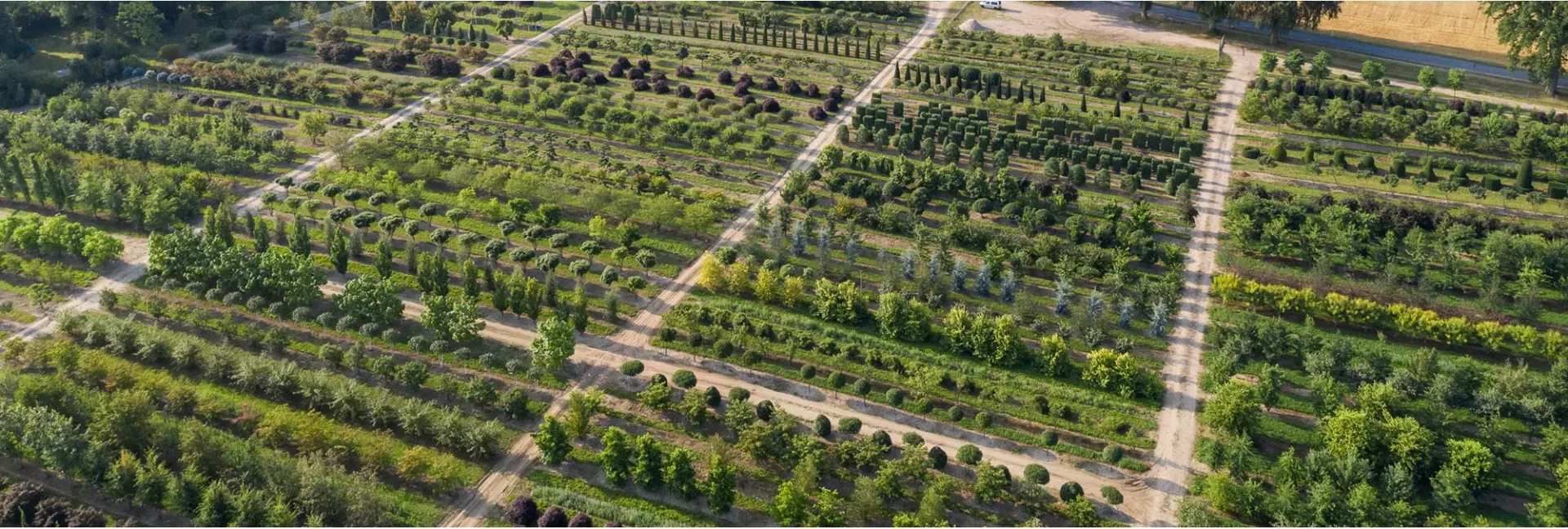
_400x400.webp)
